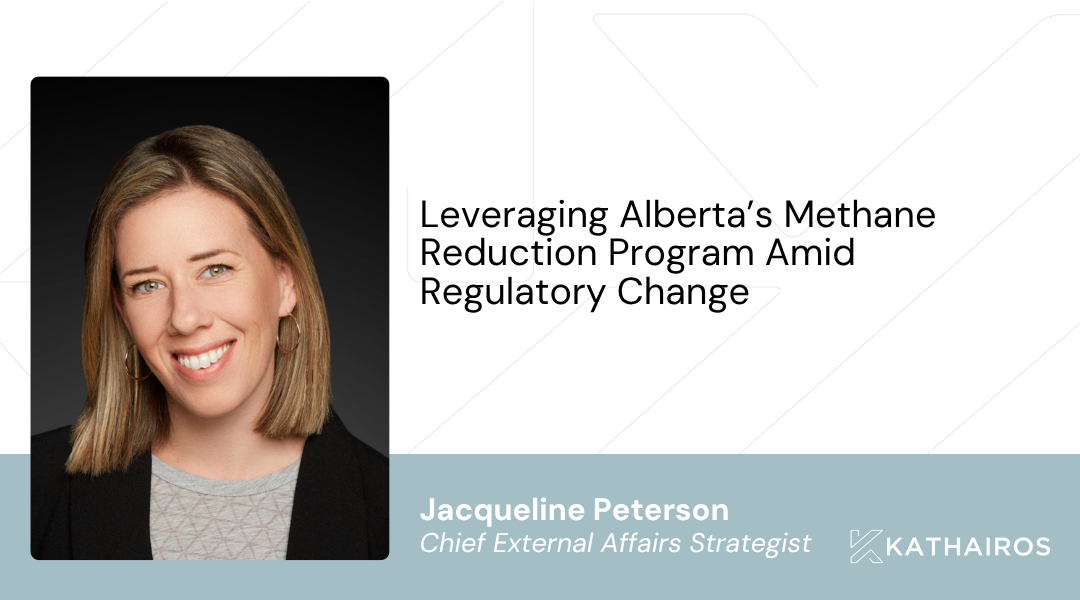
Kathairos has emerged as the leading North American solution for methane elimination from pneumatics, with more than 2,400 systems in operation across North America and over 70 major oil and gas producer partners.
In this post
While COP26 sparked a wave of new state commitments on climate in the US, there is still a looming question up in the air: how much progress can be made without all 50 states going all in?
Since COP26 was held last year in Scotland, many states including Hawaii, Maine, New Mexico and Washington have announced “high impact” actions being celebrated by the US Climate Alliance, a collective of governors formed following former President Trump’s decision to pull the US out of the Paris Agreement in 2017.
The problem? Only about 25 governors, representing a little more than half of the states, are part of the alliance.
When it comes to policies and regulations that impact climate initiatives, state leaders are hardly on a united front, with some taking an aggressive stance on combating climate change, and others remaining firm on maintaining the status quo.
State versus Federal
Although the Biden administration is pushing for progress at the federal level, by advocating for halving emissions by 2030 and transitioning fully to a net zero economy by 2050, many experts are sceptical on whether these ambitious goals are achievable without across-the-board cooperation.
“There absolutely needs to be federal leadership on national and international goals and commitments,” remarks Ben Grumbles, Maryland’s environmental secretary and the president of the Environmental Council of the States, a non-partisan association of state and territorial environmental agency leaders. “But for the nation to meet national commitments, it’s truly up to the states to implement them.”
The US Climate Alliance
Over the past year, the member states of the US Climate Alliance have touted significant progress towards ambitious climate reduction goals, with member states representing 56% of the country’s total population and accounting for 62% of the nation’s GDP.
Even though not all states are on board with making ambitious legislative mandates to meet climate initiatives, the states that are on board are making significant progress. In addition, some of these states, like California and New York, represent large parts of both the US and global economy, meaning that their impact is proportionally greater to begin with.
In addition, actions in one state can trickle down to others and have great impact across state lines. Jeff Mauk, executive director of the National Caucus of Environmental Legislators, notes the example of Washington implementing standards for state energy imports, which directly impact fossil fuel plants in Montana.
“No state is an island,” says Leah Stokes, senior policy advisor at Evergreen Action, a climate change advocacy group. “When one state acts, that can spill over into other states’ actions too.”
The missing pieces of the puzzle
The coalition only currently represents 43% of total US emissions according to its annual report, meaning that a large majority of emissions are coming from the remaining non-pledged states.
It’s also no secret that many of the climate alliance states do not depend heavily on industry to begin with, meaning that while their contributions are not trivial by any means, it still leaves the question of tackling the climate crisis in the states least likely to sign up.
In addition, there still exists a major partisan divide on climate: the US Climate Alliance includes just three Republican governors from Maryland, Massachusetts and Vermont, all of whom are considered more moderate.
The bottom line
The primary ways for the federal government to incentivize more states to get on board with climate action? Money and regulations.
All states are already receiving funding for electric vehicle charging stations through the Infrastructure Investment and Jobs Act, and the EPA can simply tighten emissions controls on industry.
That said, the main driver remains monetary incentive. Investment makes it cheaper for the states to join the energy transition and makes climate action initiatives more palatable to state governments that may not see these objectives as crucial to their agendas, or beneficial for their platforms.
One thing is certain: the future is murky.
A lot of states are waiting to see what happens with pending legislation from Congress, including the uncertain Build Back Better Act, and states also remain in limbo due to the fact that state legislatures only meet on a part-time basis.
At the end of the day, the ambitious pledges and commitments are great, but what will ultimately fulfil the country’s climate action ambitions will be states taking concrete, sustainable steps to energy transition.

.png)

